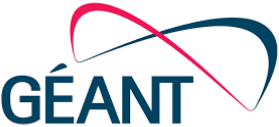From DWDM to OTN: Why you should Understand the Optical Transport Network Evolution and its Implications on your Business Now
Trusted by:


















What does the future Dense Wavelength Division Multiplexing (DWDM) look like? And what does that imply for Optical Transport Networks (OTN)? Surging demand for high-speed broadband connectivity is well known and well reported. From 5G to mandates from non-profit organizations, such as the OECD (Organisation for Economic Co-operation and Development): we can say an Optical Transport Network Evolution is on the way. But what does that mean exactly? And how do you manage it for your organization?
Rethinking our networks: Why you should be planning for the terabit age
Consumer demand, new 5G use cases and the IoT will require new optical transport technologies to meet the demands of the ‘Terabit Age’. It means that carriers must be able to integrate new technologies into increasingly heterogeneous networks, while maintaining a single-inventory view of all their assets. Learn more about how our networks are developing in our blog ‘Rethinking our networks: why you should be planning for the terabit age.’
Preparing for Optical Transport Network Evolution
Wish to learn how you and your business can prepare for the upcoming optical transport network evolution? Right now you can download our free OTN e-book and get all the information you need to get full control over your optical transport network.
First things first: we need to demystify telecom network asset management for agile operations
Telecom network asset management is a fundamental discipline, but it’s becoming increasingly complicated – and, if you don’t get it right, then it can put a brake on your plans to deliver more agile operations and services – and hold back your efforts to deploy full-fibre networks. In our blog ‘’Demystifying telecom network asset management for agile operations,’ we answer the questions:
- Why is telecom asset management complicated?
- How have customer relationships evolved?
- What will be key to protecting margins, growing revenue and retaining customers?
- Why is understanding the entirety of your asset base, at all times, fundamental for successful agile operations?
Adapting to an increasingly diverse ROADM landscape and new NMS reporting interfaces
Changes are all around us, and with them comes challenges to overcome. Have you been thinking about adapting your business to an increasingly diverse ROADM landscape and new NMS reporting interfaces? Changes to ROADM (Reconfigurable optical add-drop multiplexer) capabilities and the introduction of new reporting interfaces has resulted in a complex, diverse landscape. Operators must integrate new NMS reporting solutions alongside existing platforms. How do you consolidate all of these into a single inventory management system that provides the interfaces you need?
Read on in our blog ‘Adapting to an increasingly diverse ROADM landscape and new NMS reporting interfaces,’ and learn more about embracing new interfaces, how evolution brings new challenges for OSS reporting and how ROADM continues to evolve.
Why you should understand your consolidated network inventory for effective WDM network planning
WDM investments have surged – and considerable future growth is expected. Consequently, operators need to properly understand their WDM assets to meet a number of business needs – operational performance is one, but planning for activating unlit fibres and for building out new links is just as important. So find out how you can manage WDM growth effectively, and how you should be matching resources to demand. This is vital for business growth, so read on in our blog ‘Why you should understand your consolidated network inventory for effective WDM network planning‘.
Are you ready for elastic optical networks?
When reading about the terabit age, changes in the realm of DWDM and OTN, many more questions arise rapidly. For instance: are you ready for Elastic Optical Networks? EONs differ from traditional WDM (wavelength division multiplexing) systems in that they can adapt to channel bandwidth requirements according to demand by changing the transmission channel spacing. With Elastic Optical Networks (EONs) currently receiving a lot of attention and research resources. EONs enable high-capacity data transmission with spectrum allocated according to traffic demands, and are expected to usher in the ‘100 GB/s era’. Read more in our blog ’Are you ready for Elastic Optical Networks?’ and find out how the right inventory management system can get you ahead of the curve.

Automatic discovery and reconciliation are essential for assuring the continuity and performance of network services
Network change and evolution is a continual, daily occurrence. As well as planned design changes and build, such as the addition or upgrade of new platforms and services, there are innumerable ongoing changes created by the daily activities and functions of existing production services. Of course, that’s the point. These changes cannot be innumerable in complex operating systems. They are finite and so it’s essential to have an accurate, single overview of the network, and all the changes within it, at all times. Find out how Automatic discovery and reconciliation are essential for assuring the continuity and performance of network service now.
One database to rule them all: The telecom inventory database and its role in supporting automation and efficiency optimisation
One thing becomes clear: a comprehensive telecom inventory database is now indispensable for all operators and service providers. While the need for such a comprehensive view of inventory assets has been clear for some time, many operators are still wrestling with legacy systems that are no longer fit for purpose. That needs to change.
But the fact is that many networks are some way from either approach. The data is there, but it hasn’t yet been federated or consolidated. As a result, operators lack this single view and cannot expose it to functions and processes that can benefit from it.
If this sounds like your situation and if ‘data scatter’ is a familiar problem, we can help. We can provide you with a pathway to comprehensive data consolidation, via federation if you like, with the end result a complete, integrated telecom inventory database that is constantly updated, providing you with the information you need to support your evolution and transformation.
Why don’t we take a look at your position and show you how we can solve the data scatter problem and provide you with the master telecom inventory database to rule them all that you need for your future operations?

Future-Proof Your Network with VC4 Service2Create (S2C)
Wish to learn more about how S2C can help you with the challenges that lay ahead? We can help you with a demo directly! Or perhaps you would like to now more about ow the optical transport network evolution will impact your business. Wait no longer, start preparing today and contact us.
Frequently Asked Questions (FAQs)
1. How does network inventory management help in OTN evolution?
Network inventory management is essential for Optical Transport Network (OTN) evolution because it provides real-time visibility into every asset, connection, and configuration across the network. This clarity enables operators to plan capacity upgrades with confidence, match the right bandwidth container (ODUk) to the right service, and deploy new technology—such as advanced FEC or higher-order multiplexing—with minimal risk. Furthermore, it underpins automation initiatives by serving as the authoritative data source for provisioning tools and SDN controllers, ensuring that OTN services are deployed quickly, accurately, and cost-effectively.
2. Why is WDM network inventory important?
WDM networks are all about maximizing fiber capacity by combining multiple wavelengths on a single fiber link. A solid inventory solution tracks each wavelength’s utilization, route, and associated hardware—like transponders, amplifiers, and ROADMs—to ensure resources are used efficiently. By proactively identifying available wavelengths and planning expansions or upgrades, operators can meet growing data demands without overbuilding. In addition, accurate WDM inventory data helps rapidly reroute traffic during failures, supporting stringent service-level agreements (SLAs) and maintaining high levels of customer satisfaction.
3. Why should businesses invest in logical and physical network inventory software?
Investing in comprehensive inventory software covering both physical and logical layers provides end-to-end network visibility that is invaluable for planning, troubleshooting, and overall operational excellence. Physical inventory details tangible assets like fibers, cabinets, and hardware, while logical inventory maps out services, traffic flows, and configurations. Combining these perspectives allows for faster service rollouts, reduces the time to pinpoint and fix network issues, and ensures regulatory compliance by maintaining an auditable record of all network components and services. Ultimately, such an integrated approach lays the groundwork for long-term scalability, enabling enterprises to adapt quickly to new technologies and evolving demands.



